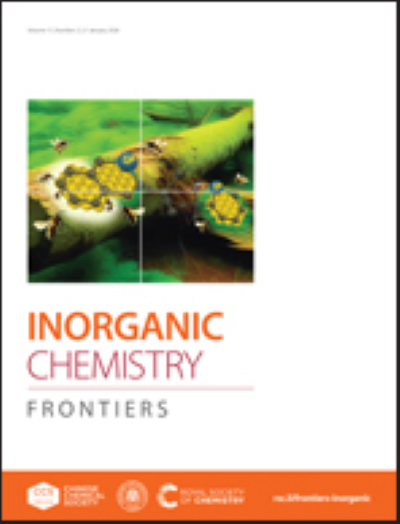Structural optimization of oxygen vacancies in WO3 by Cu doping for enhanced electrocatalytic nitrate reduction to ammonia
IF 6.1
1区 化学
Q1 CHEMISTRY, INORGANIC & NUCLEAR
引用次数: 0
Abstract
Electrochemical nitrate reduction to ammonia can not only remove harmful nitrate pollutants from wastewater but also generate valuable ammonia. In this paper, a simple hydrothermal method was used to successfully synthesize the nanorod-shaped Cu-WO3 catalyst, demonstrating excellent NO3RR performance. Experimental results indicate that Cu-doped WO3 significantly increases the content of oxygen vacancies compared to the sample of WO3, resulting in improved NO3RR performance. As a result, Cu-WO3 exhibits high yield of NH3 is 2131.3 μg/h/mgcat and Faraday efficiency is 94% at optimum potential of −0.6 V (vs. RHE) in an alkaline electrolyte. 15N isotopic labeling tests confirm the origin of produced ammonia. Cu-WO3 also exhibits excellent electrochemical cycle stability and long-term durability, suggesting it possible application in industrial filed. In situ Fourier-transform infrared (FTIR) spectroscopy reveals that Cu-WO3 can effectively adsorb nitrate and nitrogen dioxide intermediates. This work provided valuable insights for the exploration of efficient nitrate NO3RR electrocatalysts.Cu掺杂增强电催化硝酸还原制氨WO3中氧空位的结构优化
电化学硝酸还原制氨不仅能去除废水中的有害硝酸盐污染物,还能生成有价氨。本文采用简单的水热法成功合成了纳米棒状Cu-WO3催化剂,具有优异的NO3RR性能。实验结果表明,与WO3样品相比,掺cu的WO3明显增加了氧空位的含量,从而提高了NO3RR的性能。结果表明,Cu-WO3在碱性电解液中,在- 0.6 V (vs. RHE)的最优电位下,NH3产率为2131.3 μg/h/mgcat,法拉第效率为94%。15N同位素标记试验确认了产生氨的来源。Cu-WO3还表现出良好的电化学循环稳定性和长期耐久性,具有工业应用前景。原位傅里叶红外(FTIR)光谱分析表明,Cu-WO3能有效吸附硝酸盐和二氧化氮中间体。这项工作为探索高效硝酸NO3RR电催化剂提供了有价值的见解。
本文章由计算机程序翻译,如有差异,请以英文原文为准。
求助全文
约1分钟内获得全文
求助全文
来源期刊

Inorganic Chemistry Frontiers
CHEMISTRY, INORGANIC & NUCLEAR-
CiteScore
10.40
自引率
7.10%
发文量
587
审稿时长
1.2 months
期刊介绍:
The international, high quality journal for interdisciplinary research between inorganic chemistry and related subjects
 求助内容:
求助内容: 应助结果提醒方式:
应助结果提醒方式:


